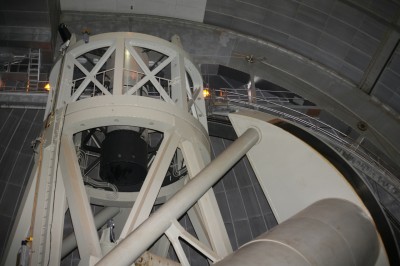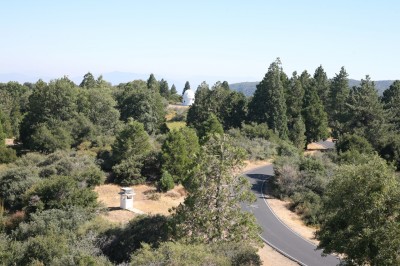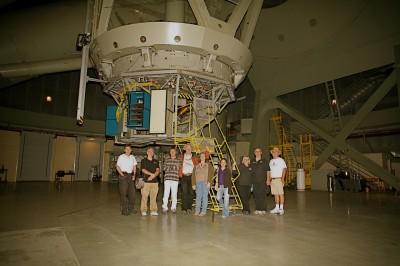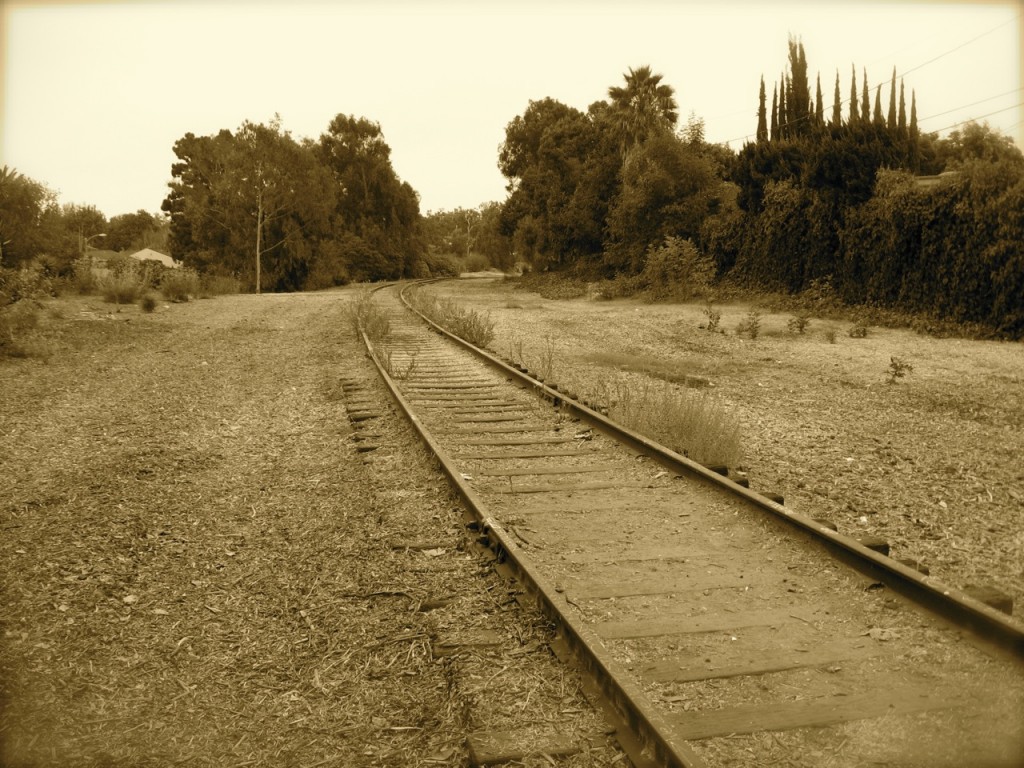Last weekend I was part of a group making a visit to the Mount Palomar Observatory.
When I was in school (voraciously sucking up astronomy books), Mount Palomar seemed to me like a place of magic and wonder. From its opening in 1949, and until 1992/93, the giant 5.1 m (200 inch) Hale Telescope was the largest and most important telescope in the world. (Actually, there was a larger Soviet telescope of a later design, but it is often omitted because it never functioned quite well).
The compound on the Southern California mountaintop also encompasses several smaller telescopes. Together, they account for most of the groundbreaking discoveries in the entire history of astronomy.
Here are some pictures. (Click to enlarge).

In front of the Hale Telescope dome, Mount Palomar. From left to right: Jed Laderman, Dave Yantis, Robert Lozano, Reinhard Kargl.

Looking up to the secondary mirror, toward the top of the dome. In the old days, this is where the observer would have sat in a cage all night long, handling photographic materials. Today, the instruments are photo-electronic. Human observers no longer ride the elevator to the top).

The old control panel, preserved in a perfect vintage look. Doesn't it seem like something from Star Trek? (Today, the telescope operator sits in a heated cabin, insulated from the dome interior. This being on a mountain top, it gets extremely cold in the winter).

View from the Hale dome's circular catwalk. In the distance is the dome of the historic 18 inch Schmidt telescope. Beginning in the 1930s, Fritz Zwicky did his first surveys of supernovae here. The dome is no longer in use today.
More on Fritz Zwicky and the 18 inch Schmidt telescope.




